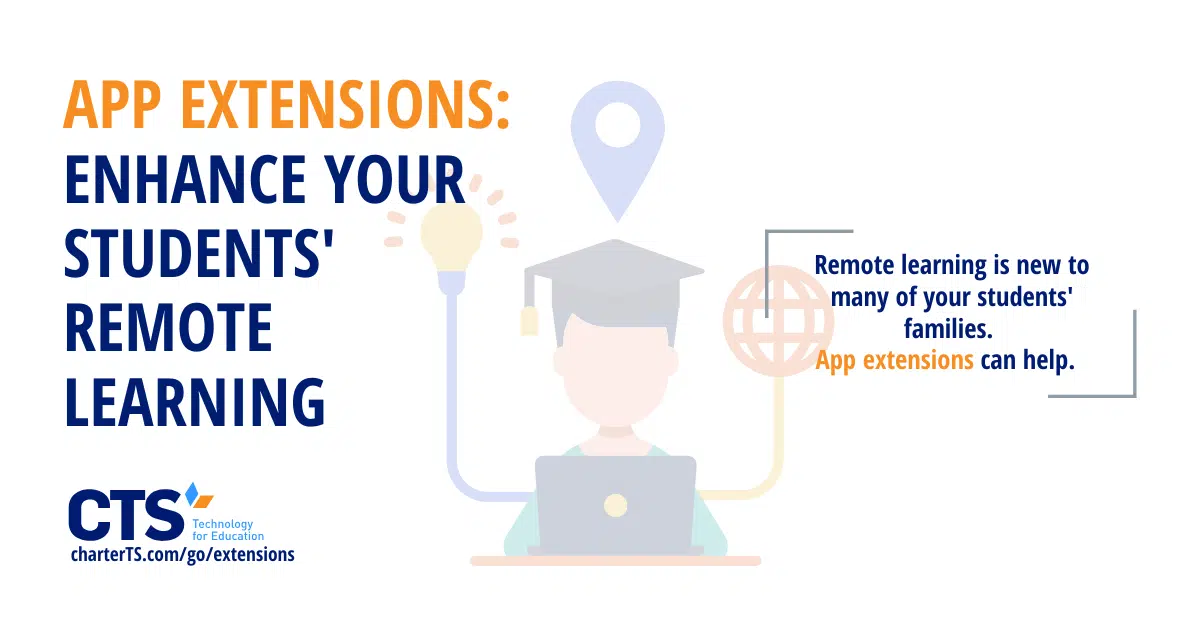Students’ remote learning requires significant guidance from parents.
Even the most robust distance learning programs require significant investment on the part of students’ family members. From managing individual student schedules, ensuring student attendance in each of their scheduled classes, to tracking assignment completion and submission, families across the United States have found themselves having to closely guide their students through the remote learning process.
How can I ensure my student receives all of the relevant updates from a particular teacher or class? Where can I go to access instructional content once a video conference is over? How can my youngest learners, who may or may not know how to type, effectively communicate with their teachers or classmates? And how can teachers enhance the efficacy of existing online learning tools? The answers to all of these questions can significantly improve distance learning programs, allowing them to more closely simulate the in-person learning environment.
Enable notifications for remote learning extensions to ensure alerts occur.
Many schools have made significant use of Google Chrome extensions or other browser plug-ins to drive their remote learning processes. Still, some students miss critical updates or notifications pushed-out by these platforms. Why? The push notifications for a particular app are turned off on their personal or school-issued device.
Typically appearing in the top-right-hand corner of the student’s screen, these notifications can, for instance, signal new assignment uploads, messages from a child’s teacher, or some other form of communication that is related to the child’s class. To ensure these notifications are enabled in, for example, Google Chrome, families can click the three vertical dots to the right of the browser’s search bar, select Settings, click Extensions, and adjust the settings of each of the applications their student uses for distance learning.
When engaged in schoolwork, students should also unmute their volume settings so they can hear any sounds associated with notifications from their distance learning applications.
Download a screen recorder to archive key instructional or scheduling content.
Applications like Screen Recorder, Screencastify, or Full Page Screen Capture can also allow students to archive instructional content from a particular lesson. If, for example, a math teacher is demonstrating how to solve a particular set of equations, students may want to refer back to the lesson or specific screen in which the teacher demonstrates the problem’s solution.
Of course, many teachers do archive their video lessons, but some districts prohibit staff from recording their remote learning sessions. Teaching students to use these tools regularly throughout distance learning can allow them to quickly archive important information for later reference while working on homework or other class assignments.
Remote learning extensions can enable younger learners to more easily communicate with teachers.
For younger learners, communicating remotely with teachers presents particular challenges, often requiring parents to stop whatever they’re doing to assist their child with typing or other technology challenges. Installing applications like Voice in Voice Typing or other speech-to-text applications can eliminate communication barriers between students and teachers, allowing children to more easily communicate confusion or questions about course content, whether or not they’ve learned to type.
As with the applications referenced above, these tools are typically available at little-to-no cost to families and can significantly enhance the value of existing resources like Google Classroom, while also reducing the amount of hand-holding required by parents, who may be juggling their remote workloads during the day.
Teachers can also add attendance- and revision-tracking extensions to monitor student engagement.
Teachers can similarly leverage extensions to support their students’ learning. For example, attendance-tracking applications like Meet Attendance for Google Meet can allow them to more easily document which students attend which classes. Without normal attendance-tracking procedures at their disposal, many teachers in remote environments—and particularly those with large class sizes—may start the day’s lesson without accounting for which students are in attendance. Deploying these applications can quickly snapshot which students are in a particular class and allow teachers to notify family members accordingly.
Other plug-ins like Share to Classroom and Classwork Zoom for Google Classroom also allow teachers to quickly push out supplementary instructional resources and track student engagement with particular assignments. Classwork Zoom, for example, uses the revision history of Google Docs to show teachers how much time a student has spent on a particular assignment, data that can then be used to influence later instructional content or remediation efforts.
Coupled with the efforts of students’ family members, these extensions give teachers the opportunity to enhance the remote learning process for their students.
At CTS, we’ve helped clients across the country navigate the unique challenges of distance learning.
Our team has supported more than 60 schools with the challenges of remote learning. Whether recommending student- or staff-facing resources or simply helping a school team manage their device inventory, our team has experience in both day-to-day implementation and high-level strategic school technology programming.
We’ve also created resources, like our COVID-19 Resource Guide and Virtual Graduation Roadmap, to offer schools concrete solutions to some of the most pressing challenges of distance learning. Contact us today to learn more about our services and how we can help you accomplish the unique mission of your school.




